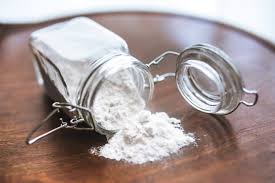The Secret Behind Tapioca Pearls - A Fascinating Journey from Starch to Chewy Delight
- keifu2

- Jun 13
- 3 min read

No bubble tea is complete without tapioca pearls! These glossy, chewy spheres may look simple, but behind their perfect texture lies a meticulous production process and strict quality control.
Today, let’s take you behind the scenes of how tapioca pearls are made—step by step—from humble starch to the star ingredient in your favorite drink.

🔍 It All Begins with the Right Ingredients
Though small in size, tapioca pearls require carefully selected ingredients to achieve their signature texture:
Tapioca Starch
Extracted from the root of the cassava plant, this is the main component responsible for the pearls’ elasticity and translucent finish.
👉 Did You Know? Tapioca pearls don’t contain actual pearls. Their glossy look and bouncy texture come from starch that expands and gelatinizes when heated.
Water
Water purity directly affects starch absorption and shaping. Most factories use RO (reverse osmosis) filtered water to eliminate impurities, ensuring better consistency and a clean, clear appearance.
Sugar or Brown Sugar
Used to add flavor and color. Some recipes include brown sugar or molasses to create that rich, caramelized taste—perfect for pairing with milk tea.
⚙️ Two Major Production Methods: Which Pearl Are You Sipping?
Tapioca pearls are typically manufactured using one of two methods. Each process results in
slightly different textures and characteristics.
✅ Method 1: Layered Powder Rolling
This technique mimics traditional hand-rolling, making it ideal for producing smaller, finely shaped pearls.
Process Overview:
Tapioca starch and water are blended into moist granules
The mixture is placed into a rotating drum
Dry powder is gradually added as the pearls tumble and form
Layering continues until the pearls reach the desired size
Pearls are dried or pre-cooked for finishing
🎯 Key Feature:Because this method builds the pearls layer by layer, the result is a pleasantly chewy texture with a layered bounce—perfect for those who enjoy more dimension in every bite.
✅ Method 2: Dough Cutting & Rolling
This is a more streamlined method, commonly used for producing pearls of varying sizes with higher efficiency.
Process Overview:
Tapioca starch, water, and sugar are mixed into a dough
The dough is shaped into long strips
Strips are cut into small pieces
Pieces are rolled into spheres
The pearls are then dried or pre-cooked
🎯 Key Feature:This method uses hot water to partially gelatinize the starch during dough preparation, resulting in a smooth, even texture with no hard center. Cooking time is also shorter compared to other methods.
🧪 Quality Comes First—Every Single Pearl Matters
Before packaging, each batch of pearls undergoes rigorous quality checks:
Starch Absorption Rate Monitoring: Ensures consistent elasticity and cooking performance
Water Activity Testing: Controls moisture to extend shelf life
Size and Appearance Inspection: Checks for uniformity in diameter and shape
Heavy Metal & Microbial Testing: Meets food safety regulations
Cooked Texture Simulation: Mimics in-store preparation to verify final texture

💬 Did You Know?
Even identical batches of tapioca starch can behave differently depending on how they’re stored. On one occasion, a batch of pearls came out unusually soft after cooking. Upon investigation, the starch had been stored for three extra days in a high-humidity warehouse, subtly altering its structure. Since then, the team began tracking storage time and humidity daily, even adjusting production schedules on humid days. Turns out, achieving that perfect chew isn’t just about the formula—it’s about mastering every tiny detail.
🍹 Final Thoughts: A Little Pearl with a Big Backstory
The art of making tapioca pearls is a delicate balance of precision, timing, and control.From selecting the right starch to maintaining strict process standards, every decision affects how that little pearl feels in your mouth.
So next time you sip a cup of bubble tea, take a moment to appreciate that chewy little gem—It’s a product of care, science, and craftsmanship, all rolled into one perfect bite.

#KeifuGlobal #KeifuIngredients #KeifuPearlStory #TapiocaPearls #BubbleTeaEssentials #FromStarchToPearl #BobaMakingProcess #PearlProductionSecrets #FoodScienceInBoba #ChewyPerfection #MilkTeaMagic #QualityMatters #BeverageIndustry #BehindTheDrink #BubbleTeaInnovation






